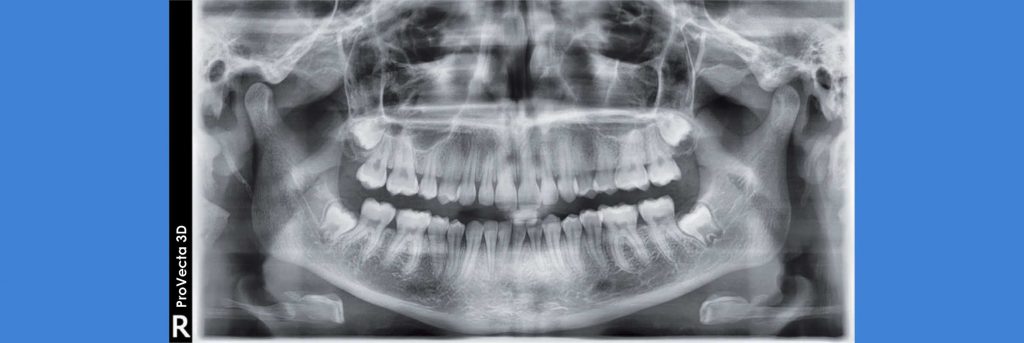
Blog
The Positive Effects of 2D & 3D Imaging
Posted in Company on January 22, 2020
The first X-rays were discovered in 1895 by German physicist Wilhelm Röntgen. He tried to coin the name Röntgen rays, but the name x-ray stuck. Just 14 days after Röntgen announced his discovery, Friedrich Otto Walkhoff and Wilhelm Konig took the first dental radiograph (1).
They wrapped an ordinary photographic glass plate in a rubber dam, Walkhoff held it in his mouth for a 25 min exposure and Walkhoff’s molars were the first dental radiographic produced.
Since then, dental radiography has jumped leaps and bounds and now plays a regular role in patient exams and treatment plans. The radiographic achieved in current density provides practitioners with a view of their patient’s hard tissues, teeth, and bones. Radiographs also allow the detection of other potential health issues such as caries, jaw bone diseases, periodontal disease, tumors, and infections under gums.
There are many things to consider today when choosing your X-ray source. Consider not only the tech of the system but the flexibility of its program offering, dose reduction options, ease of operation, and space requirements.
The value added to your patients are:
- Increased Diagnostic Accuracy
- Best Possible Imagery
- Less Radiation Exposure
Today, your patients have more options than ever when it comes to choosing a dental practice. What makes your practice stand out above the rest? Sure, some new tech could come across as gimmicky, and why change something that has been working? Because to attract and keep patients, dental professionals need to be up on new tech and, more importantly, know how to utilize it to provide improved treatment to their patients. Ultimately leading to a better experience and office visit for your patients.
Providing the best care possible to your patients is no longer as simple as taking a standard X-ray. Patients are more aware of the level of care they are or not receiving. Maximize your diagnostic capabilities by upgrading to a new 2D, 3D imaging system. Better yet, a hybrid system that enables you to produce both.
There are a plethora of systems available on the market today. Air Techniques teamed up with Durr Dental to provide the ProVecta 3D Prime. Together, with 50 years of X-ray technology knowledge, we developed the ProVecta 3D Prime to offer a hybrid system of 2D and 3D imaging. The hybrid options create diagnostic flexibility for you, along with ease of use and lower radiation dose. It provides 17 X-ray programs, including four pediatric-specific programs. To learn more about PorVecta 3D Prime, click here.
We encourage you to speak with your local rep to learn how upgrading your imaging system can not only improve your diagnostic capabilities but increase your treatment plans and provide a higher standard of care to your patients.
-
Gensman LI. A brief history of endodontics.Jô Endod 1982;8:S38 [Google Scholar]

Read Next:
Hear ye, hear ye: Air Techniques Announces its new blog – The Crown!
As we ring in 2020 and the next decade, Air Techniques debuts a new source of content, The Crown, its new dental blog. Promising to provide a fresh take on industry trends, new…



 Contact
Contact